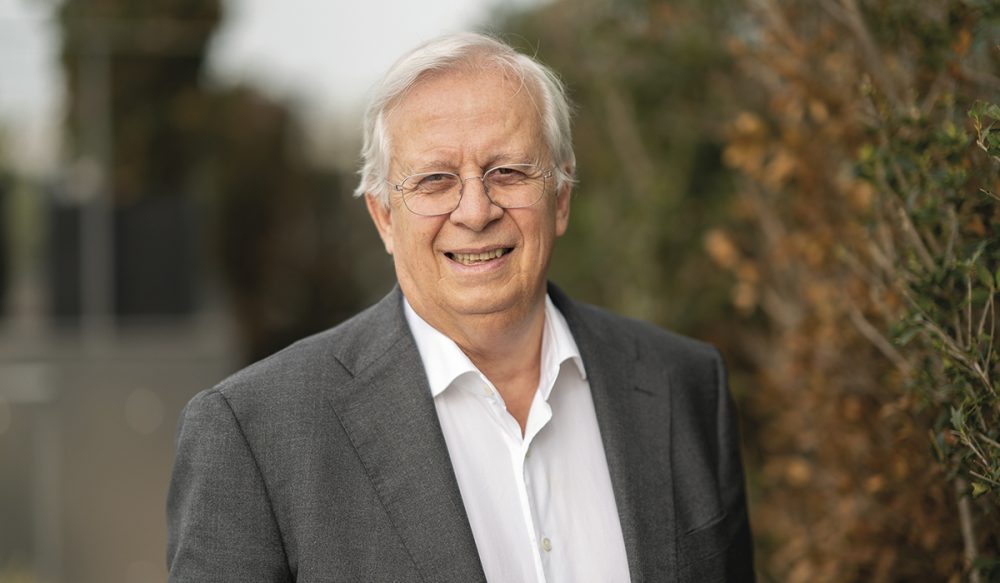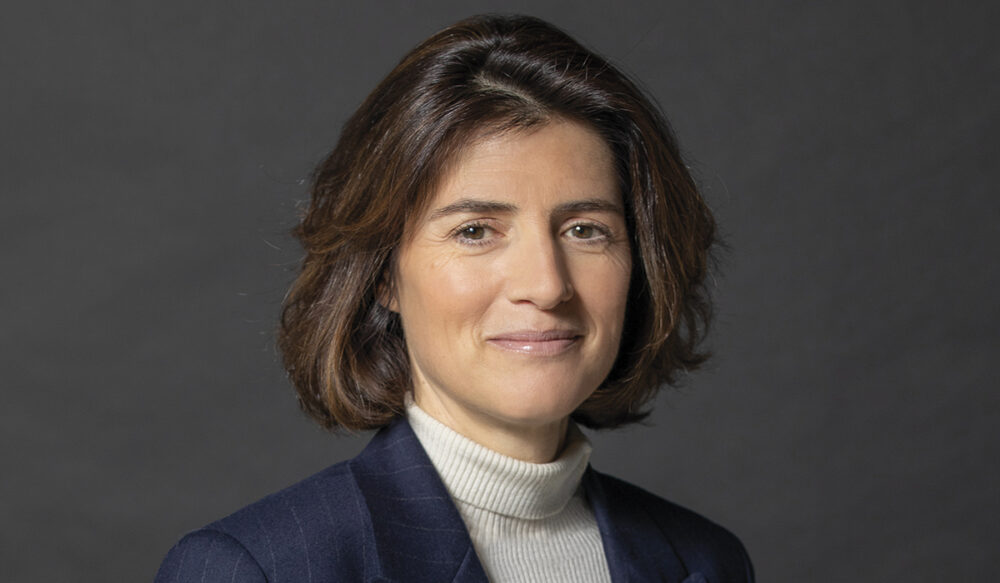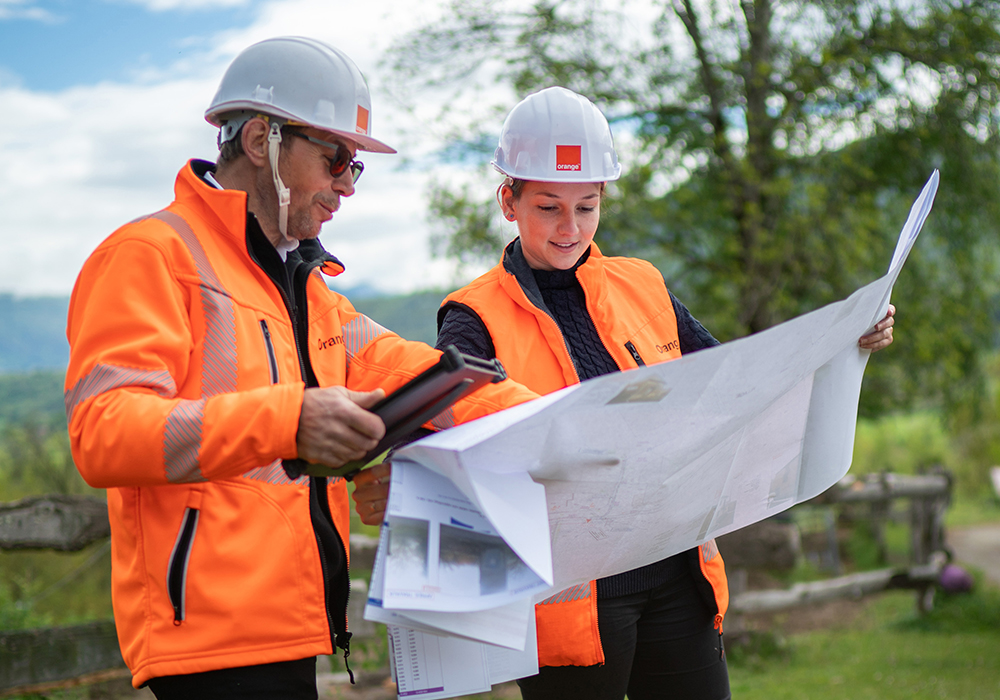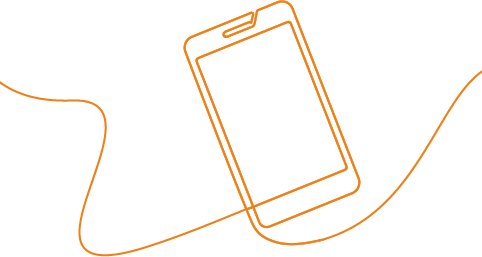Rapport annuel intégré Orange – 2022
Message
Jacques Aschenbroich, Président du Conseil d’administration
“Face à l’ampleur des défis qui se posent aux opérateurs télécoms, le Groupe dispose d’atouts qui lui permettent d’afficher des résultats très solides.”
Lire le message (ouvre un nouvel onglet)

Entretien
Christel Heydemann,
Directrice générale
“Grâce à la mobilisation de ses équipes, Orange prouve au quotidien sa résilience et sa capacité à s’adapter rapidement aux évolutions du marché.”
Lire l’entretien (ouvre un nouvel onglet)Notre rapport annuel intégré en un coup d’œil
Le rapport annuel intégré 2022 d’Orange se dévoile en 7 chiffres :
- cette 8e édition présente, comme chaque année, la performance globale du Groupe : c’est un document incontournable pour toutes ses parties prenantes ;
- 1 nouveau plan stratégique, Lead the Future, projette Orange dans l’avenir et tire parti de la qualité de ses fondamentaux ;
- 2 prises de parole : dans lesquelles Jacques Aschenbroich, Président du Conseil d’administration, et Christel Heydemann, Directrice générale, dressent le bilan de 2022 et donnent le cap pour les années à venir ;
- 6 leviers de création de valeur, économique, environnementale, sociale et sociétale, illustrent la performance durable du Groupe dans le monde ;
- 58 chiffres clés ont été identifiés pour démontrer les avancées d’Orange vers l’atteinte de ses objectifs et l’excellence de ses équipes ;
- dans 1 seul but : comprendre le Groupe, ses défis, ses atouts pour les relever, et comment Orange œuvre pour une société de confiance ;
- enfin, 6 pages de notes permettent de commenter et d’annoter le rapport, conçu comme un document de travail, car le futur d’Orange s’écrit au quotidien.
Nos atouts
Orange dispose de nombreuses forces sur son marché. Parmi elles : son modèle d’affaires, créateur de valeur, ses équipes, expertes et engagées, ses modes de financement, diversifiés et durables, et son éthique des affaires, garante de la confiance accordée par ses clients et partenaires.

Nos leviers de création de valeurs
L’Europe, l’Afrique et le Moyen-Orient, les infrastructures, les entreprises, l’environnement et le social sont autant de leviers qui permettent à Orange de créer de la valeur pour l’ensemble de ses parties prenantes.

Notre impact
Orange, par ses résultats financiers et extra-financiers et sa contribution aux Objectifs de développement durable des Nations unies, a un impact sur l’ensemble de la société.

Nos atouts
Nos leviers de création de valeur
Europe
Présent dans huit pays européens, Orange réalise la majeure partie de son chiffre d’affaires sur le continent. Le Groupe y exploite ses réseaux très haut débit fixe et mobile, tout en saisissant des opportunités ciblées de consolidation.

98,8 M
de clients mobile
11,6 M
de clients convergents
6,9 Mds €
de chiffre d’affaire dans la zone en 2022, soit + 6,4% par rapport à 2021
143,1 M
de clients mobile dans la zone
Afrique et Moyen-Orient
Fort d’un ancrage local de plus de vingt ans, le Groupe poursuit, dans 18 pays en Afrique et au Moyen-Orient, une stratégie reposant sur l’extension de ses réseaux et le développement de son écosystème multi-services. Les services financiers mobiles occupent une place centrale dans l’offre Orange dans la zone.

Infrastructures
Orange poursuit ses investissements dans le déploiement des réseaux fixe et mobile de nouvelle génération, qui permettent au Groupe de jouer un rôle essentiel pour fournir connectivité et services numériques au plus grand nombre.

64,9 M
de foyers raccordables à la fibre (FTTH) dans le monde
près de
11,6 M
de la population ouverte en moyenne par la 4G dans nos 8 pays européens et 17 pays couverts en Afrique et au Moyen-Orient
+ 14 %
de croissance du chiffre d’affaire d’Orange Cyberdefense entre 2021 et 2022
220
pays et territoires couverts par nos réseaux entreprises
Entreprises
Le Groupe capitalise sur sa maîtrise unique de l’ensemble des enjeux de connectivité, de sécurité et de résilience pour accompagner ses clients entreprises dans le monde entier grâce, notamment, à ses entités Orange Business et Orange Cyberdefense.

Environnement
Orange s’est fixé l’objectif d’être net zéro carbone d’ici à 2040. Pour cela, le Groupe poursuit ses efforts de réduction de ses émissions carbone, recourt de manière accrue aux énergies renouvelables, et déploie un ambitieux programme d’économie circulaire.

– 20,8 M
de réduction d’émissions de CO² entre 2015 et 2022 (scopes 1 et 2) à base comparable
près de
130 M €
d’économies réalisées depuis 2020 grâce au développement de l’économie circulaire pour nos équipements réseau
33,1 %
de femmes dans les réseaux de management
1 M
de bénéficiaires d’ateliers et formations Orange au numérique entre 2021 et 2022
Social
Protection des données, développement de l’accès au numérique, promotion de la diversité et de l’inclusion : nous agissons auprès de toutes nos parties prenantes, partout où nous sommes présents.



